Actors Kelly Brock Boen & Ed Nylund -- And last IMPROV Shoot-Day for lead Carolyn Zaremba@Charlie's Place. EMERALD CITIES punk bands FlIPPER and THE MUTANTS music will tie it ALL together in the cut!
Don't miss FREE MOVIE: https://bynwr.com/videos/emerald-cities
“There are moments in its narrative sequences [EMERALD CITIES], as well as the musical interludes featuring new wave bands Flipper and The Mutants, of genuine apocalyptic craziness.”—Chicago Reader
————
DAY-THREE (2ND & LAST SHOOT-DAY)/ Trona and finishing up.
The next morning––our last day of shooting in Death Valley––I figured that the challenge was to film a complex interaction at a cafe between my two main characters, Z and Ed, and her subsequent meeting and departure toward San Francisco with Flipper band member Ted Falconi. But since our motel rooms were closer to Trona, it made sense to first grab some exterior shots in town before heading back to Charlie’s.
The first Trona scene I needed was one with Ed and Kelly Brock Boen, in front of Trona’s massive borax mill. That would explain some of Ed’s history as a long-time Trona resident––“he worked there for many years before retiring.” Kelly ended up being a good foil for Ed’s “mill” dialogue, feeding him some good unrehearsed and improvised one-liners like, “Where’s your reindeer, Santa?” It helped the film’s slender narrative to have Ed say he was thinking of going back to work back at the mill again. Kelly’s horrified response to that obviously ridiculous statement (Ed was clearly too old and feeble to ever do that kind of work again) added some good levity. And Ed did a great job of presenting himself as the crusty mill worker, and explaining that his daughter, Z, had left to “study acting,” as if reluctant to admit she had simply run off. Importantly, his and Kelly’s “old friends” moments gave me a chance to slowly pan across the mill with their walking away (“going to get coffee”), to reveal the huge structure and its disturbingly loud industrial sounds echoing in the distance.
Santa (Ed Nylund) meets up with a Trona Mill Worker, played by Kelly Brock Boen. Photo by Julie Schachter.
When they reached Kelly’s car I told him to repeat his Captain Queeg audition routine from The Caine Mutiny, the one he’d recited for me years earlier during a visit in Oakland. Maybe it had been Ed’s words about Z studying acting that had triggered my association. Fortunately, I remembered how proud Kelly had been of his amateur acting ability. Keep in mind, this was an off-the-cuff decision on my part. Neither Kelly nor I knew ahead of time that I would urge him to replicate this material. So, no planning, no rehearsal, no nervousness (no time for any of that), no instructions for Ed, other than to listen. I did tell Kelly to play off anything Ed said during his Caine Mutiny performance, and to stay in the Queeg character no matter what Ed said.
When an impatient Ed exclaimed, “I’m going to go to the motel and lay down,” Kelly-as-Queeg jumped on that line, improvising more “Bogart” courtroom dialogue; “I never laid down on my job, I got that ship in shape. The men were stealing strawberries, writing novels!” As Ed finally gave up, wandered away, Kelly nicely broke character with, “OK Ed, see you later!”
This was some fun double improv, each actor existing fully in the present, reacting in real-time to what the other one was saying. The risk I took––making a spontaneous decision to add an idea during the throes of shooting––paid off in this case, adding some welcome comedy to the mix.
As a filmmaker/videomaker every spontaneous gesture you make won’t necessarily result in a successful outcome. But in the moment of creation it certainly gives one a thrill just to be trying something. I don’t have to tell you that this isn’t how real movies are made. Those directors hardly ever get the surge of adrenalin that comes with this kind of an improv approach ––everything on the line (especially if you are shooting your own flick with your own money!). So consider the risk carefully, then throw caution to the wind and see what transpires!
Because I could remember a story told by a friend, Kelly’s glory-moment audition from high school added a great (and hilarious) real-life improv moment to Emerald Cities. In my next feature, Morgan's Cake, I again benefited from this improv approach, when both lead actor Willie Boy Walker’s real draft story and soundman Nick Bertoni’s recollection of his father’s untimely death supplied two terrific scenes.
After we completed the Mill scenes, plus staging some shots of Ed hitchhiking in front of the Trona high school, Ed asked when he would get to do his Christmas Pageant performance. He had brought along a full Santa costume which he wanted to show off, and had obviously cooked up something, some type of performance piece that would undoubtedly present some serious content. Ed’s question helped me notice a church across the street, and I wondered if they might have a stage for such a thing.
This kind of footloose improv movie production demands leaving natural shyness behind, so I hurried over to check it out. I knocked on the door and was greeted by an elderly couple who said that they were caretakers. I asked if we could possibly shoot a scene there, while wondering out loud if they would be so kind as to participate as onlookers for my actor’s Christmas pageant rehearsal. Surprisingly, they agreed.
As we set up the camera and Nick Bertoni readied his Nagra and microphone, I heard organ music begin in the church’s basement. Nick asked me if we should try to stop them from playing, and I caught myself from having the natural urge to protect a soundtrack. I kind of liked the ambience it created, but it was very risky to proceed in that fashion, because any cutting I may need to do of Ed’s scene. Normally, music must always be recorded separately, to control volume, EQ, and most-importantly insure that dialogue from different takes can be edited seamlessly, with no jump in music. I knew my footage would forever be married to whatever was performed by the anonymous organist. But I went with it––I guess I was inspired by the live quality and the serendipity of it all.
Ed Nylund rehearses his impromptu Christmas Pageant, as Nick Bertoni prepares to record sound. Photo by Julie Schachter.
Regarding the two audience members, my only direction to the couple was that if Ed asked them a question they should glance at their watches and then maybe look back to each other. That was their pressure valve, no matter what they witnessed. Ed had free rein to do whatever he wanted and I had asked for no prior details. So my imagination about his performance ran the gauntlet. He was certainly capable of anything, even stripping nude in front of a classroom of men, women, and perplexed children, as he had done once in the 1960s at a local Bay Area college. So I trusted him to deliver some startling footage.
Ed began his performance by showing off his full Santa costume, just like he said he had wanted, pulling out every item from his Santa box as the camera rolled. After acting out his pageant details, even asking the stand-ins if they wanted to participate on stage (a “No” came quickly), the sequence ended with him holding the fake white eyelashes up to his face before breaking down into a pathetically ssomewhat-sobbing finale.
I finished up the shots from another camera angle, capturing his downcast retreat from the stage as the couple watched in dismay. So, with that church scene completed (Whew!) it was lunchtime. Afterwards, we would head back to Charlie’s, to hopefully finish up.
NOTE: During the Church Scene shoot I suddenly heard the organ music in the basement shift to an atonal riff, just when Ed was wrapping up his Santa pageant performance. That change in melody prompted me to quickly change my shot. I zoomed in and caught a dramatic close-up of Ed!s face––just what the sequence needed. Leave room as an improv artist, to make mid-filming choices!
CHARLIE'S PLACE/CAFE SCENES. Band FLIPPER’S Ted Falconi’s Arrival/Departure.
Luckily, Charlie did have a picnic table out in front (with a roof to block the sun), because quite a bit of complicated building- block dialogue and interaction between Ed and Z needed to take place there. And I figured out a way to fake the gas station idea––I imagined it around back, out of sight from “the cafe” (it would never appear on film, because it didn’t exist).
Adding to the growing list of Production Miracles the production required was the fact that Charlie of Charlie’s Place had a TV that could be powered by a 12-volt car battery when not run off of the house generator, and it even got reception on the outside table where I needed it.
Immersed as I was in the normal complexity of daily filmmaking (thinking script/dialogue, camera placement and setups, lighting/F-stops/focus, directing of actors/improv, shooting for cuts––I hadn’t really given a thought to “WHERE’S TED?” I had discussed with Ted about him playing the part, but since he hadn’t joined our initial caravan of cars, I had no idea when or how he could connect (pre-cellphones). But I hadn’t been spending time praying for that particular miracle. Maybe part of my brain figured I could fill in his character with one of the crew members. The highest priority of the moment were shooting the cafe scenes, where audiences would get to know the two lead characters, so I got right on that.
I’m wondering what to shoot next? Am I getting it? Will shots cut together? Photo by Julie Schachter.
To begin with, I asked Charlie if we could move his TV out to the picnic table and he consented. We quickly hooked it up to the car battery, fiddling around until it got some images. Next, I requested access to his stove, to cook up some eggs as a meal Z and Ed could share––food-as-props, including plates and silverware. Charlie helped facilitate this as well. Of course, Ed had his own whiskey bottle handy, so there was no need to round up that item!
Finally the scene was set. I’d almost call it “blocked out,” but by beginning with a wide shot I figured that I could then understand how Ed and Z naturally entered the frame, and construct other shots and angles off that. I planned that Z’s main focus was on watching TV, and I knew that if I showed a shot of just her face looking forward, just showing the side of the small portable TV, I could always cut in my own video footage later. In the finished movie you'll see how I incorporated footage from The Mutants performance of their song, “New Dark Ages” for that insert.
As soon as I had the actors set at the table I learned that Ed had brought along a new, compact calculator––his most recent electronic gift to himself. When I heard him play music on it, it wasn’t hard to imagine some filmmatic possibilities. I started planning how the device could be incorporated into his interaction with daughter. As if she wasn’t angry enough with his constant drinking (on and maybe even off-camera), this discordant computer music could possibly be used to push things to a breaking point (we movie directors can be a mean bunch, when we need “conflict” for our plot points!).
Once the establishing wide-shots were completed (Ed brings eggs and toast to the table, gets seated, Z watches TV), I moved in for a reverse wide- shot. Z was still glued to the TV, as Ed turned off the set and began praying before the meal. Z became infuriated with losing her program, not to mention getting exasperated at his stumbling prayer (she angrily supplied the missing words).
Z and battery-operated TV––her father, Ed, angers her from across the table. Photo by Julie Schachter.
During the break in filming (co-cmer Bill Kimberlin and I were busy repositioning the camera), Ed started fiddling around more with the calculator, showing it off to Z, playing the music, finally stumbling on its ability to play multiple tunes at the same time. That’s when I immediately put a halt to his off-camera show-and-tell. I sensed that the extra music racket was an exciting discovery for the scene’s objectives, displaying Z’s dissatisfaction with her father, and desert living. Worried that spontaneity and freshness of the scene- to-come could be lost, I worked extra-fast to set my close-up framing.
When finally ready, I quickly focused on Ed’s hands holding the calculator (zoom-in, adjust lens, zoom-out) and started up the camera, “CAMERA ROLLING!” Nick quickly followed––“Rolling,” and with a quick shot of the clapboard (“CLACK,” as Julie closed it, marking sync between picture and sound), I called, “ACTION!” unleashing Ed to deliver his spiel. And with almost every word he said, he set Z afire. She griped that (1) the calculator had cost as much as the new TV she desired and (2), that the computer music it played was interfering with her TV viewing. Just before things reached a nerve-racking climax, in rolled Ted’s red Pinto wagon, tires churning up dust as he crossed through my shot! I actually caught his arrival on-film, because he had arrived exactly while I was still shooting the “calculator meltdown” sequence.
I still have no idea how Ted found us, at a location we didn’t know existed less than 36- hours before, and yet was so punctual at a shoot that had no solid schedule. Maybe he talked to the same waitress who told us about Charlie’s place. In any case, Ted’s arrival was Miracle #3 (or #4...I’m losing count here).
There was hardly a break in the production as I cut camera, met Ted in the driveway and explained the urgency of continuing to shoot. I told him I’d wave him in when I had the framing for a second “insurance” take #2. This time I’d be shooting Z’s expression as well, in a medium close-up as she spots his car entering the property.
Next up, I shot Ted approaching on foot from a distance (camera repositioned and set to full-wide), his all-black punk-band Flipper attire cutting a nice dark form against the sun-bleached landscape. And he did well, acting as if there actually were pumps around the back, calling out questions about different grades of gas (Regular? Ethel?).
Ed then entered the wide-shot, generating further improv banter with the punk customer, after which I cut camera, re-framed, and instructed Z to break away from the TV, exiting the table to enter the house. I figured she could approach the mysterious stranger in the back somewhere.
Relocating the camera again, I then filmed a sequence of dialogue between Z and Ted, set around the old half-camper shell, she inhabiting the inside and communicating through a small sliding window. The partially scripted, mostly improv exchange was designed to connect them up, leading to her getaway with Ted. Following that sequence, I reset the camera in the front of Charlie’s house, to cover both Ed resting in a chair next to some propane tanks and Z exiting the house.
Actor Ed Nylund seated in chair, awaiting “Daughter’s Getaway” sequence. Photo by Julie Schachter
Adding to the turmoil of Ed realizing his daughter’s fleeing in Ted’s car, we timed it so he suddenly discovered that his giant sombrero was on fire This was the same sombrero that was worn during Z’s opening scene after the curtain-drop. The huge boulders at Charlie's place helped shield the fact until my pan of the burning hat revealed the surprise. What wasn’t planned however was how Ed would deal with this emergency.
Dramatically, he rushed over, removed his apron, and tossed it on top to extinguish the flames, further stomping it with his shoes. (In editing, I would enjoy adding the calculator’s music to his “Mexican hat dance”). But because of the excessive amount of lighter fluid that someone had squirted on the hat, Ed couldn’t readily put it out. And his imbibing of alcoholic beverages between and during takes hadn’t helped––he was much more unsteady than I realized.
Photo by Julie Schachter, ©1983 L.L. Productions.
After Ed’s futile attempts to smother the fire, he tripped and veered head-first into a cactus patch nearby. And it was worse than anyone knew. The plant into which Ed fell was armed with inch-long spikes, many now imbedded his arms, shoulder, and most distressingly, the side of his head. Before I could call “CUT,” soundman Nick and Kelly rushed in, pulling Ed from the cactus and beginning the process of extracting the spikes, Nick handing out pairs of needle nose pliers from his toolbox.
Needle nose pliers to the rescue. Photo by Julie Schachter.
Fortunately, Ed seemed to be totally anesthetized from the whiskey he’d drunk between takes. In fact, he seemed happy in some odd way, even scolding Julie, ordering her to take pictures instead of helping. It was clear––even in his distress––that he loved being the center of attention. Certainly, that scene went way beyond the normal parameters of improv.
The sombrero-burning scene was the wrap for Charlie’s location, representing the completion of all interior and exterior shots I thought I might possibly need. I was, of course, relieved that those last scenes––mostly improv on the spot––were finally now in the can. And while the schedule had been super hectic, there had still been the usual pleasures of creation going on.
NOTE: The filmmaker who does it the DIY indie way, often has to go with the flow, whether the stock be expensive film or high-def video. So she will have to make snap decisions at every point, before and while the camera rolls. Only if you are both the cameraman and director can you take such improvisational liberties (while being vigilant for cuts fitting together), as you react quickly to extract all possible content from each filming situation.
SEE EMERALD CITIES here:
————-
"Rick, you NEVER have to even quasi-apologize to me for IMPROV! All of the greats were/are improvisors--from Bach and Lizst and Picasso to Cassavetes, and Bujalski and Swanberg. It's only IDIOT FILM REVIEWERS (but I repeat myself, the adjective is redundant) who have this fake-o Hitchcock story-board idea of filmmaking as dressing up the corpse for display, so death will imitate (badly imitate!) life. Improv doesn't kill the object in the first place so doesn't have to put makeup on."




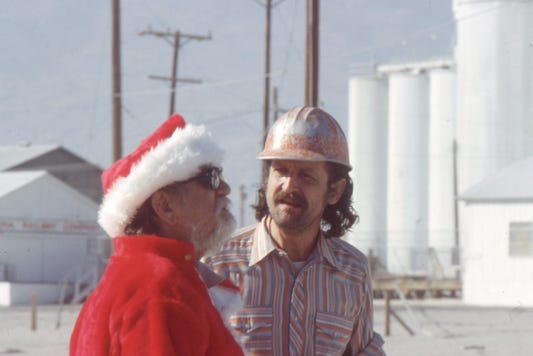
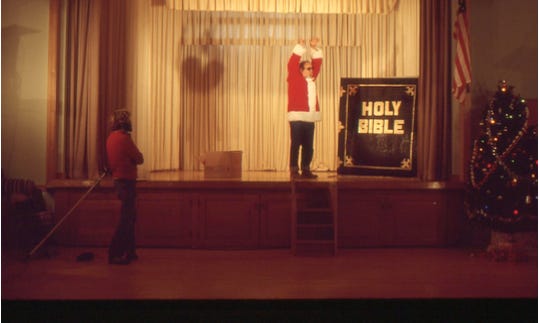
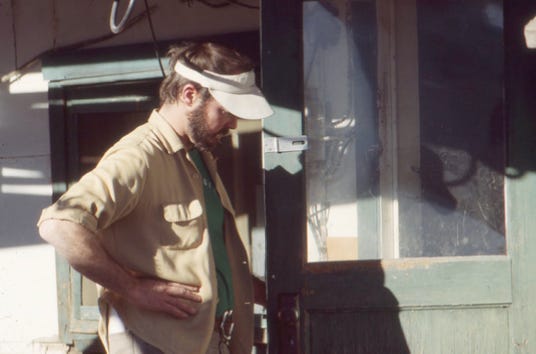
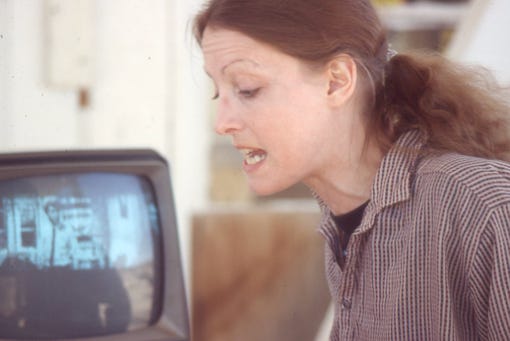
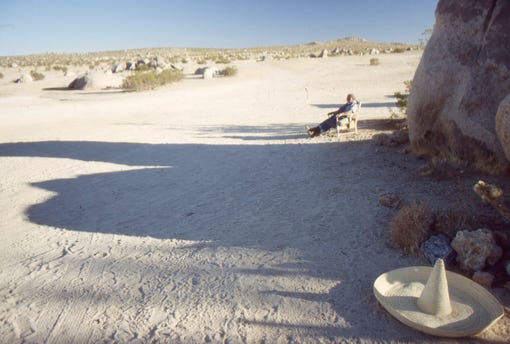
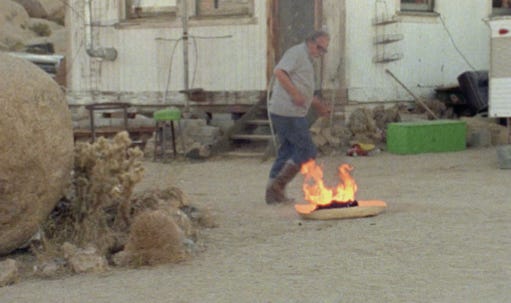
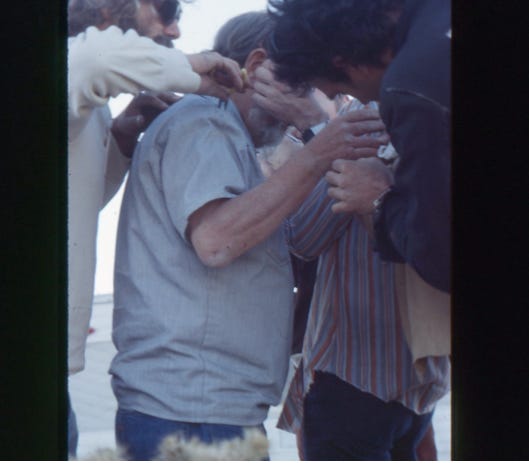
What great stories of improvisational Magic!
This time the phrase/sentence that leapt out was “This kind of footloose improv movie production demands leaving natural shyness behind.”
Result: “I asked if we could possibly shoot a scene there, while wondering out loud if they would be so kind as to participate as onlookers for my actor’s Christmas pageant rehearsal. Surprisingly, they agreed.”
For me, so much of the “shyness” I experience is habitual fear of some kind of failure. When, for some reason, I remember that I have everything inside - as do we all - that I/we need to Be Who I/We Came Here To Be, the Ego-Fear subsides and I feel free to just say or do what I know I must say or do.
(Really love the Ray Carney quote at the end.)